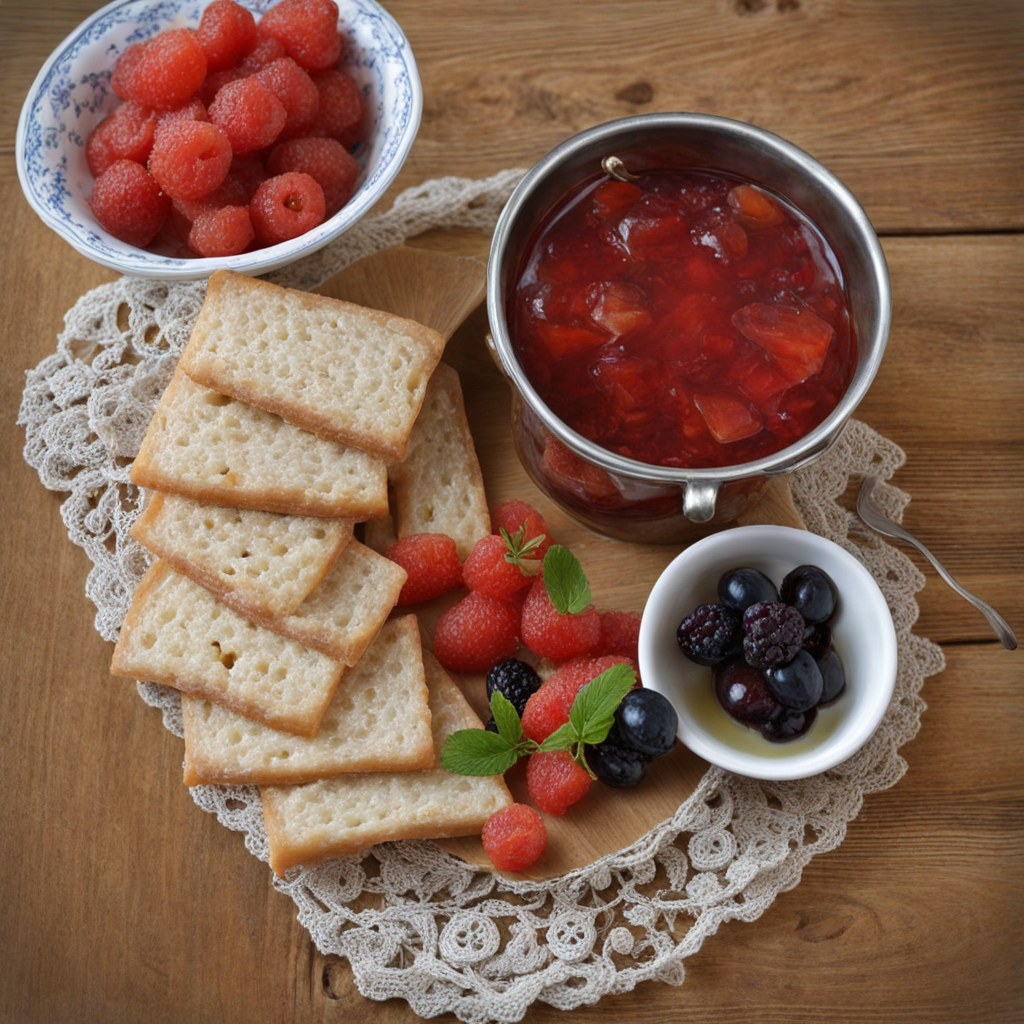Tulumbe
Tulumbe are a delightful Serbian pastry that perfectly encapsulate the essence of traditional Balkan sweets. These elongated, deep-fried dough treats are made from a simple mixture of flour, water, and a touch of sugar, resulting in a rich, tender texture. The process of making tulumbe involves piping the dough into hot oil, where it puffs up and develops a golden-brown exterior. The contrast between the crispy shell and the soft, airy interior creates a satisfying bite that is both indulgent and comforting. Once fried, tulumbe are generously soaked in a sweet syrup, typically made from sugar, water, and a hint of lemon juice, which infuses the pastries with a luscious sweetness. This syrup not only adds moisture but also enhances the overall flavor profile, making each bite a harmonious blend of sweetness and a slight citrusy brightness. The syrup seeps into the pastries, ensuring that every tulumbe is decadently moist and flavorful, offering a delightful experience with each mouthful. Tulumbe can be enjoyed on their own or as part of a larger selection of Serbian desserts. Their unique shape and texture make them visually appealing, while their addictive sweetness makes them hard to resist. Perfect for any occasion, whether it's a festive celebration or a casual coffee break, tulumbe serve as a wonderful introduction to the rich and varied world of Serbian cuisine, inviting you to explore more of its delightful flavors.
How It Became This Dish
The Sweet Story of Тулумбе: A Culinary Jewel of Serbia Origin Тулумбе, pronounced as “tulume,” is a beloved pastry that encapsulates the rich culinary history of Serbia and the broader Balkan region. Its origins can be traced back to the Ottoman Empire, which ruled over much of Southeast Europe for centuries, profoundly influencing local cuisines. The dessert is believed to have evolved from a Turkish dessert known as “tulumba,” which is made from a similar dough and is also fried and soaked in syrup. The name “tulumba” itself is derived from the Arabic word “ṭulumba,” meaning pipe or tube, which reflects the shape of the dessert. While its exact historical roots are difficult to pinpoint, it is widely acknowledged that the dessert made its way to the Balkans during the Ottoman period and adapted to local tastes and ingredients. In essence, tulumbe represents a fusion of culinary traditions, merging Middle Eastern confectionery techniques with local Balkan flavors. Cultural Significance In Serbian culture, tulumbe is more than just a dessert; it is a symbol of hospitality and celebration. Traditionally, they are served during festive occasions, family gatherings, and religious holidays. The act of sharing these sweet treats is a gesture of warmth and community, reflecting the importance of food as a means of fostering relationships. Tulumbe is particularly popular during Orthodox Christian celebrations, such as Christmas and Easter, where they are often included in a larger array of sweets that adorn festive tables. The dessert is also commonly found in bakeries and cafes throughout Serbia, where it is enjoyed with coffee or tea, making it a staple of everyday life. The preparation and presentation of tulumbe can vary from region to region within Serbia, leading to a rich tapestry of traditions surrounding this pastry. In some areas, it may be made with flavored syrups, such as rose water or orange blossom, while others may add nuts or coconut for added texture and taste. This regional diversity not only highlights local preferences but also reflects the adaptability of the recipe over time. Development Over Time The journey of tulumbe through time is a fascinating reflection of Serbia’s socio-political changes. During the 19th and early 20th centuries, as Serbia began to establish its national identity, the culinary scene also evolved. Traditional Ottoman influences began to blend with European styles of cooking, leading to the modernization of many Balkan dishes, including tulumbe. In the post-World War II era, Serbia underwent significant transformations. The establishment of socialist Yugoslavia brought about a new emphasis on national pride and cultural heritage. During this time, tulumbe became emblematic of Serbian culinary identity, celebrated in cookbooks and featured in culinary competitions. The dessert's popularity surged, and it became a staple at weddings and various celebrations, solidifying its place in the hearts and palates of the Serbian people. In recent decades, the globalization of cuisine has introduced new culinary techniques and ideas, but tulumbe has remained a cherished part of Serbian culture. Today, it is often made with a modern twist, incorporating ingredients like dark chocolate or a variety of syrups to appeal to contemporary tastes while still honoring traditional methods. The rise of social media has also played a crucial role in revitalizing interest in traditional Serbian desserts, allowing home bakers and professional chefs alike to share their interpretations of tulumbe, thus keeping the legacy alive. The Making of Тулумбе The traditional method of making tulumbe is an intricate process that begins with preparing the dough. Made primarily from flour, eggs, and water, the dough is whisked until smooth and then piped into long, ridged shapes using a pastry bag. The dough is then deep-fried until golden brown, creating a crispy exterior that contrasts beautifully with the soft interior. Once fried, the pastries are drenched in a sugar syrup, typically flavored with lemon juice or vanilla, that seeps into every crevice. This step is crucial, as it not only sweetens the tulumbe but also keeps it moist. The result is a delightful combination of textures and flavors—crunchy on the outside and syrupy soft on the inside. In homes across Serbia, the preparation of tulumbe often becomes a communal activity. Family members gather to help pipe the dough or prepare the syrup, turning the process into a bonding experience. This shared culinary endeavor reinforces the cultural significance of tulumbe as a food that brings people together. Conclusion Тулумбе is much more than a sweet treat; it is a testament to the rich history and cultural tapestry of Serbia. From its Ottoman roots to its status as a symbol of hospitality and celebration, tulumbe has evolved over the centuries, adapting to changes while remaining a beloved staple in Serbian households. As the world continues to embrace global cuisines, this delightful pastry stands as a delicious reminder of the importance of tradition, community, and the stories that food can tell. Through every bite of tulumbe, one tastes the history of a region shaped by diverse influences, resilience, and the enduring power of shared meals. In Serbia, where food is a central element of culture and identity, tulumbe will undoubtedly continue to be cherished for generations to come, ensuring that this sweet story lives on in the hearts of those who savor it.
You may like
Discover local flavors from Serbia







